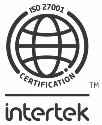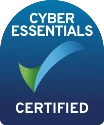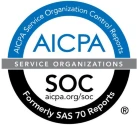Simplifying Surplus Lines Tax Filing with InsCipher

Welcome to our latest integration partner Q&A blog! Here we explore how INSTANDA’s integration with InsCipher is transforming the way insurance carriers and MGAs manage surplus lines tax filings across multiple states and territories.
Read on as we catch up with Shannon Brooks, Solutions Engineer at INSTANDA, along with Covey Ogden, VP of Product Management, and Jason Russon, VP of Sales and Marketing at InsCipher, to uncover the benefits and nuances of this powerful partnership.
How does InsCipher simplify surplus lines tax filing?
Jason Russon:
InsCipher makes the complex process of surplus lines tax filing much simpler. For those unfamiliar with surplus lines, tax filing is a cumbersome process. Insurers must follow multiple rules and regulations when reporting surplus lines policies in each state. Failing to comply can result in hefty fines, penalties, or even the loss of a state license.
If an insurer only operates in a single state, compliance is not too challenging. There are usually about seven or eight parameters to track, such as fees, forms, and taxes on specific lines of business. However, once an insurer starts operating in multiple states, tracking these parameters becomes incredibly difficult.
InsCipher simplifies the surplus lines tax filing process in two main ways:
- Turnkey Solution: For businesses wanting to write Surplus Lines or Excess & Surplus (E&S) business in multiple states, we design a customized plan. They write their policies and send them to us, and we handle everything else.
- InsCipher Connect: For enterprise-level clients, we've created InsCipher Connect. This software pulls in data from a policy administration system like INSTANDA, reconciles and validates data quality, and allows for easy submission to different states and territories.
Covey Ogden:
Completing the surplus lines tax filing process involves several challenges, primarily because each state has its own set of forms and reporting requirements. The data from policy documents must often be repackaged into the specific format required by each state. For example, one state might require an Excel form filled out a certain way, while another might need a PDF. For insurers operating in multiple states, this can take a lot of time.
We've standardized as much of this as possible by doing a lot of the field mapping for clients and auto-generating state-specific forms. This makes the process more efficient and accurate.
We've also built out multiple API connections to various state sites, allowing for programmatic data submission. This reduces manual processes for insurers, such as duplicate data entry.
What are the benefits of integrating INSTANDA and InsCipher?
Shannon Brooks:
INSTANDA’s integration with InsCipher ensures carriers and MGAs have access to accurate and up-to-date surplus lines tax rates across all 50 states. The integration enables our clients to achieve faster, more efficient surplus tax calculations and filings, reducing the time and effort typically spent on manual rate monitoring and data maintenance. Clients have increased confidence in their ability to maintain compliance, knowing their surplus line tax obligations are met accurately and on time. This makes it easier for clients who want to expand their geographic reach quickly.
Covey Ogden:
From InsCipher’s perspective, our integration with INSTANDA provides insurers with a frictionless experience. It's frustrating when a client must jump from one system to another, re-keying information multiple times. It's more difficult to manage the whole policy management life cycle.
Our partnership with INSTANDA aims to eliminate these issues. With INSTANDA, insurers manage the entire policy lifecycle within one system. We push data back into INSTANDA for tasks like accounting once taxes are paid. This seamless integration makes the whole process smoother and more efficient for our clients.
Jason Russon:
INSTANDA and InsCipher have collaborated with several medium-to-large MGAs, and the feedback from clients has been overwhelmingly positive. They appreciate how smooth the process is and how well the systems integrate.
Shannon Brooks:
INSTANDA also prioritizes being customer centric. From a solution standpoint, everyone in our configuration team really digs in with our clients to make sure they have as much of a turnkey experience as possible during the onboarding process. Making sure that integrations run smoothly is a top priority.
Over the past few months, we've collaborated closely to enhance the user experience for those who configure and interact with InsCipher through INSTANDA. Although it's already pretty simple, we’re developing a generic connector to enable the seamless integration of taxes and fees, as well as more standardized transaction shipping back to InsCipher.
How important is seamless data exchange?
Jason Russon:
The biggest challenge, in all of this, is data—getting data into a system like InsCipher and then getting it out. The more an organization handles data, the more manual entry occurs. By automating data entry and extraction, organizations can significantly reduce the need for manual data handling. This leads to enhanced efficiency and minimizes the risk of human error.
The technical aspect that Shannon talks about is crucial. We ensure data integration is seamless, making it easy for clients to use InsCipher and INSTANDA. We have multiple success stories where clients have praised how well the systems work together and how great the teams are to work with.
With an integration like the one we have with INSTANDA, you set up the system at the quoting stage. You bind a policy, and the data (via the integration) comes over to us automatically without any human interaction. This process minimizes errors, and the data comes across so fast and clean that we can process it super efficiently. Then, we ship the data off to the state without the insurer ever having to enter it into another system.
What does the future hold?
Covey Ogden:
We are working on some new solutions, which will soon be available to INSTANDA’s clients. We have developed a new way of filling out diligent effort forms. The form confirms to the state that admitted carriers declined to underwrite the business and therefore the insurer had to go to the surplus lines market to write the business. We created a process to make this easier and are exploring ways to incorporate that within the INSTANDA quoting process since it’s a pain point for any E&S organization.
As Shannon says, we are working on shipping data back into INSTANDA when taxes are paid to various states. Our teams are also developing new web hooks for status updates for transactions so that when a client jumps from INSTANDA to InsCipher, they're easily able to jump back to INSTANDA to finish the process.
Jason Russon:
Looking to the future, we can also see real-world applications for artificial intelligence (AI). We’ve discovered applications for how AI will transform what we do and make the experience even better for the client. In the next two years, that will be a big part of what we do, and clients will see the benefits.
Closing thoughts
The integration of INSTANDA with InsCipher is a gamechanger for insurance carriers and MGAs managing surplus lines tax filings. By simplifying a historically complex process, this partnership ensures compliance, enhances efficiency, and allows businesses to focus on growth rather than administrative burdens.
If you're ready to transform your policy management life cycle and streamline your surplus lines tax filing, contact us today to learn more about how INSTANDA and InsCipher can support your business.





